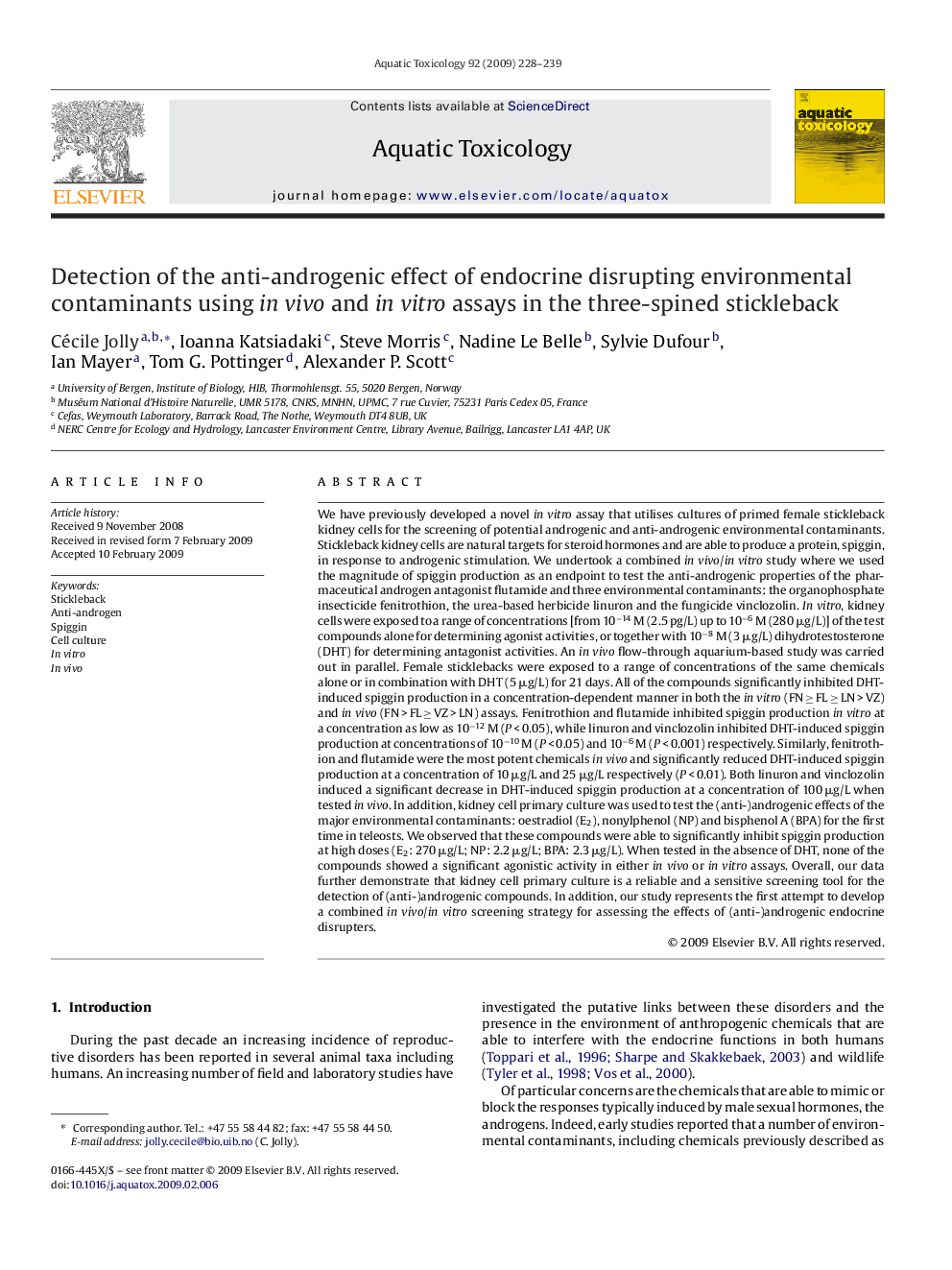| کد مقاله | کد نشریه | سال انتشار | مقاله انگلیسی | نسخه تمام متن |
|---|---|---|---|---|
| 4530563 | 1324713 | 2009 | 12 صفحه PDF | دانلود رایگان |

We have previously developed a novel in vitro assay that utilises cultures of primed female stickleback kidney cells for the screening of potential androgenic and anti-androgenic environmental contaminants. Stickleback kidney cells are natural targets for steroid hormones and are able to produce a protein, spiggin, in response to androgenic stimulation. We undertook a combined in vivo/in vitro study where we used the magnitude of spiggin production as an endpoint to test the anti-androgenic properties of the pharmaceutical androgen antagonist flutamide and three environmental contaminants: the organophosphate insecticide fenitrothion, the urea-based herbicide linuron and the fungicide vinclozolin. In vitro, kidney cells were exposed to a range of concentrations [from 10−14 M (2.5 pg/L) up to 10−6 M (280 μg/L)] of the test compounds alone for determining agonist activities, or together with 10−8 M (3 μg/L) dihydrotestosterone (DHT) for determining antagonist activities. An in vivo flow-through aquarium-based study was carried out in parallel. Female sticklebacks were exposed to a range of concentrations of the same chemicals alone or in combination with DHT (5 μg/L) for 21 days. All of the compounds significantly inhibited DHT-induced spiggin production in a concentration-dependent manner in both the in vitro (FN ≥ FL ≥ LN > VZ) and in vivo (FN > FL ≥ VZ > LN) assays. Fenitrothion and flutamide inhibited spiggin production in vitro at a concentration as low as 10−12 M (P < 0.05), while linuron and vinclozolin inhibited DHT-induced spiggin production at concentrations of 10−10 M (P < 0.05) and 10−6 M (P < 0.001) respectively. Similarly, fenitrothion and flutamide were the most potent chemicals in vivo and significantly reduced DHT-induced spiggin production at a concentration of 10 μg/L and 25 μg/L respectively (P < 0.01). Both linuron and vinclozolin induced a significant decrease in DHT-induced spiggin production at a concentration of 100 μg/L when tested in vivo. In addition, kidney cell primary culture was used to test the (anti-)androgenic effects of the major environmental contaminants: oestradiol (E2), nonylphenol (NP) and bisphenol A (BPA) for the first time in teleosts. We observed that these compounds were able to significantly inhibit spiggin production at high doses (E2: 270 μg/L; NP: 2.2 μg/L; BPA: 2.3 μg/L). When tested in the absence of DHT, none of the compounds showed a significant agonistic activity in either in vivo or in vitro assays. Overall, our data further demonstrate that kidney cell primary culture is a reliable and a sensitive screening tool for the detection of (anti-)androgenic compounds. In addition, our study represents the first attempt to develop a combined in vivo/in vitro screening strategy for assessing the effects of (anti-)androgenic endocrine disrupters.
Journal: Aquatic Toxicology - Volume 92, Issue 4, 17 May 2009, Pages 228–239